
Classic books have a lasting effect on both language and culture.
This is why classic Spanish books are fabulous options for learners.
Not only do you get to enjoy a great story, but you also learn important cultural references while improving your language skills.
In this post, you’ll get 15 excellent classics in Spanish literature to add to your reading list.
Contents
Download:
This blog post is available as a convenient and portable PDF that you
can take anywhere.
Click here to get a copy. (Download)
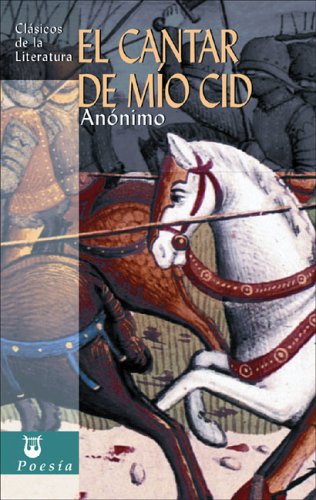 English title: “The Poem of the Cid”
English title: “The Poem of the Cid”
Year published: Likely written between 1140 and 1207
Country: Spain
Free Spanish version | Free English version | Study guide
This epic poem tells the adventures of the hero (El Cid) during the Reconquista (Reconquest), an era when Christians fought the ruling Moors for control of Spain.
It’s based on a true story, and it was passed through performances by minstrels, so the written version is probably quite different from the original version.
It’s a classic largely because of its antiquity—it’s the oldest Spanish epic poem we still have.
 English title: “Don Quijote of La Mancha”
English title: “Don Quijote of La Mancha”
Year published: 1605/1615
Country: Spain
Free Spanish version | Free English version | Study guide
“Don Quijote” is often considered one of the greatest works of literature ever published in any language. Written in the early 1600s, this story follows the often ridiculous adventures of the nobleman Don Quijote and his squire Sancho Panza as they try to revive chivalry.
Its stories are episodic, meaning they are brief episodes of the characters’ adventures. This will make it easy to read just a little at a time if you’re not prepared for a complete novel.
Since the novel is hilarious and easy to read, this is a great choice for any Spanish language learner. The story is referenced in both Spanish and American culture, and you’ll be able to discuss it with others.
 English title: “The Life of Lazarillo de Tormes and of His Fortunes and Adversities”
English title: “The Life of Lazarillo de Tormes and of His Fortunes and Adversities”
Year published: 1554
Country: Spain
Free Spanish version | Free English version | Study guide
This novella is written as a letter in which the main character shares his life story. Each chapter focuses on his life as he was serving a different master.
One reason it’s significant is because many believe it founded the “picaresque” novel. This style features a lovable rogue, or pícaro, in episodic adventures. The style was later employed by Mark Twain in “The Adventures of Huckleberry Finn.”
“Lazarillo de Tormes” was also considered heretical due to its anti-clerical content, and this is why it was published anonymously. During the Spanish Inquisition, it was even banned.
 English title: “One Hundred Years of Solitude”
English title: “One Hundred Years of Solitude”
Year published: 1967
Country: Colombia
English version | Study guide
This 1967 novel follows seven generations of one family. It uses magical realism (magic in an otherwise rational world), so it isn’t your standard family story. The first generation finds an isolated, doomed city where the future generations live (and often suffer).
This work is a major piece in the “Latin American Boom,” a time in the 1960s and 1970s during which Latin American literature took off and gained international recognition.
While it’s a worthwhile read, this is a challenging option. The complex prose and plot could make it more difficult to follow.
 English title: “Love in the Time of Cholera”
English title: “Love in the Time of Cholera”
Year published: 1985
Country: Colombia
English version | Study guide
This novel follows a love affair over several decades. A young couple is torn apart by the young woman’s father. Years pass, and the two find other loves.
After the woman’s husband passes at a ripe old age, she is drawn back to her original love. But after 50 years, is the love still there?
Gabriel García Márquez’s work is significant in general; however, “Cien años de soledad” is the more significant of the two works on this list. “El amor en los tiempos del cólera” should be a bit easier to follow, though.
 English title: “Blood Wedding”
English title: “Blood Wedding”
Year published: 1932
Country: Spain
Free Spanish version | Free English version | Study guide
This Spanish play is full of drama, deception and ill-fated romance leading up to a wedding.
A mother is suspicious of her son’s bride-to-be, while the bride-to-be herself is nervous about her upcoming nuptials. But when the bride-to-be’s now-married former love returns, things take a deadly turn.
Federico García Lorca’s works were often avant-garde, challenging social and literary norms. He was also a poet and theater director, but “Bodas de sangre” is one of his best-known plays. Think of it as a literary version of a telenovela.
 English title: “Fictions”
English title: “Fictions”
Year published: 1940s
Country: Argentina
English version | Study guide
Like Gabriel García Márquez, Borges was part of the “Latin American Boom.” This is a collection of his short stories predominantly from the 1940s.
Many of the stories focus on labyrinths, and they often incorporate elements of the fantasy genre to tell stories with surprising depth. They’ll make you think long and hard.
Interspersed English phrases should make the stories easier to follow. Additionally, short stories like this will make it easier to pick and choose what you feel like reading rather than committing to a whole novel.
 English title: “Hopscotch”
English title: “Hopscotch”
Year published: 1936
Country: Argentina
English version | Study guide
Julio Cortázar was considered one of the founders of the “Latin American Boom.” His stream-of-consciousness novel “Rayuela” follows an Argentine intellectual in the 1950s.
Some of the book takes place in Paris, while some of it’s set in Argentina. It features adventures with jazz music, Bohemians, a circus and some unexpected deaths.
The book’s most notable feature is that you can read it in various orders—either follow it straight through to the end or “hopscotch” through the chapters by following the “Table of Instructions.”
 English title: “The Feast of the Goat”
English title: “The Feast of the Goat”
Year published: 2000
Country: Peru
English version | Study guide
This novel follows three storylines and two standpoints to tell the story of the assassination of Dominican dictator Rafael Trujillo.
Llosa shows readers the inner workings of the brutal dictator’s regime as well as the aftermath of the assassination from various perspectives, providing a comprehensive overview on the various viewpoints on the real-life assassination.
Not only is the book significant for the writing, but it will also give you a more in-depth look at the role dictators can play in politics and how dictators (and their downfalls) can affect people’s lives.
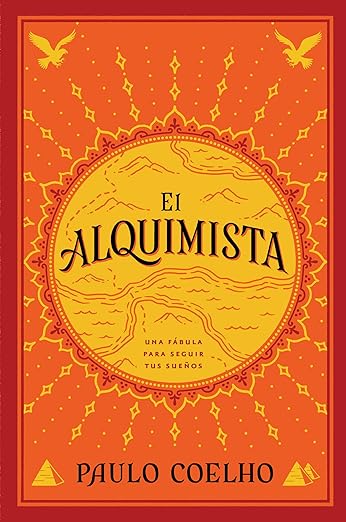
English title: “The Alchemist”
Year published: 1988
Country: Brazil
English version | Study guide
Originally published in Portuguese, this novel features a shepherd from the Spanish region of Andalusia who seeks treasure in Egypt.
A gypsy tells him there’s treasure in the pyramids. This is his “Personal Legend” or life goal. Along the way, he meets others who help him try to achieve his destiny and learns many lessons.
“El alquimista” is a modern classic largely for its (often profound) inspirational message on following your dreams and overcoming depression. Its sparse prose makes it easy for language learners to follow.
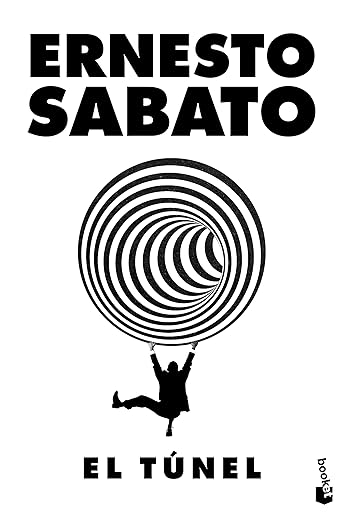
English title: “The Tunnel”
Year published: 1948
Country: Argentina
English version | Study guide
“El Túnel” is a psychological thriller and existential novel. The story is narrated by the protagonist, a talented painter named Juan Pablo Castel.
Castel becomes obsessed with a woman named María, whom he meets at an art exhibition. His obsession leads to a tumultuous and destructive love affair. As Castel delves into his complex psyche, the novel explores themes of alienation, obsession and the dark recesses of the human mind.
Sábato’s writing is characterized by its intense psychological depth and vivid narrative. This novel has become a classic of Argentine and Latin American literature.
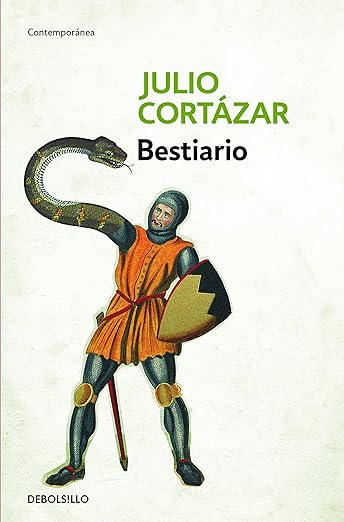
English title: “Bestiary: Selected Stories”
Year published: 1951
Country: Argentina
Free Spanish version | Free English version | Study guide
“Bestiario” is a collection of short stories from the same author who brought us “Rayuela.” This work marks the beginning of Cortázar’s distinctive and innovative literary style.
The stories blend the ordinary with the surreal, exploring themes of isolation, identity and the uncanny. Cortázar’s writing is known for its dreamlike quality and its ability to blur the lines between reality and the fantastical.
This collection is a must-read for those interested in magical realism and experimental literature. With intricate narratives and rich symbolism, “Bestiario” introduced readers to Cortázar’s unique approach to storytelling.
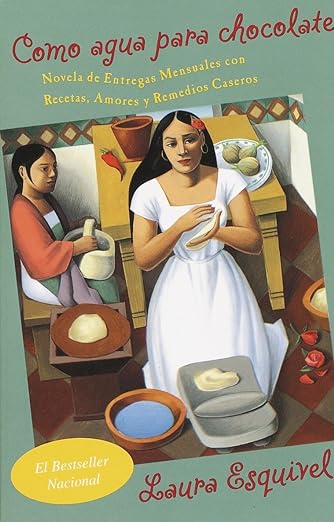
English Title: “Like Water for Chocolate”
Year published: 1992
Country: Mexico
English version | Study guide
This enchanting and sensuous tale weaves magical realism with a captivating narrative set in early 20th-century Mexico. The story revolves around Tita, a young woman forbidden to marry her true love, Pedro, who instead marries her sister to stay close to her.
Each chapter is dedicated to a recipe, reflecting the strong emotional connection between food and Tita’s feelings. As she cooks, her emotions infuse the food, affecting all who partake.
The novel has been celebrated for its evocative prose and the intimate connection between culture and cuisine. After you finish reading it, you can check out the movie of the same title.
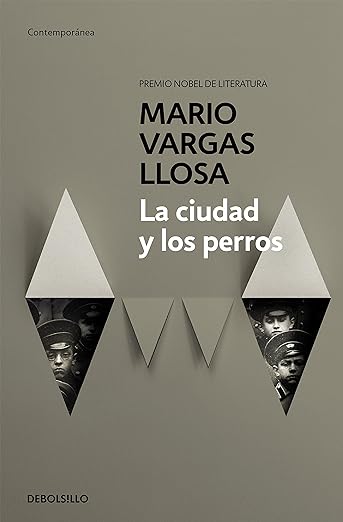
English Title: “The Time of the Hero”
Year published: 1963
Country: Peru
English version | Study guide
This novel is acclaimed Peruvian author Mario Vargas Llosa’s debut work and a significant piece of Latin American literature. The story is set in a military school in Lima, Peru, and revolves around a group of adolescent cadets.
It explores themes of hierarchy, power, violence and corruption in a rigidly structured environment. The narrative is marked by a non-linear, fragmented structure, reflecting the complex nature of the relationships and experiences of the characters.
Vargas Llosa’s novel delves into the dark underbelly of an authoritarian system, shedding light on the struggles and moral dilemmas faced by its young protagonists.
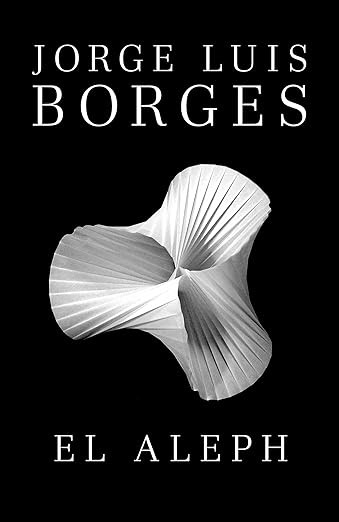
English Title: “The Aleph and Other Stories”
Year published: 1949
Country: Argentina
English version | Study guide
This is another collection of innovative short stories by the Argentine master of literature, Jorge Luis Borges. The book features a range of tales that delve into complex themes such as infinity, the nature of reality and the interplay of time and memory.
Borges’ unique style, characterized by intricate labyrinths of words and a deep philosophical underpinning, makes “El Aleph” a seminal work of 20th-century literature.
Each story is a literary gem, inviting readers to ponder the boundaries of human knowledge and the limitless realms of imagination, cementing Borges’ reputation as a literary visionary.
Why Read Classic Spanish Books?
If you’re a Spanish learner or already fluent in the language, there are many good reasons to pick up a classic in Spanish literature. Here are just a few:
- They’ll help you understand the culture. Because of literature’s role in culture, it’s helpful to read important works in Spanish to better understand the place they came from. Learning culture is an important part of learning a language, so reading pinnacle works is a step in the right direction.
- You can improve your language skills. With the context of a memorable story, you’ll learn a lot of vocabulary, and seeing sentence structures and grammar used within sentences and paragraphs will help you internalize the rules. Plus, the more you read, the easier it will get.
- Reading a good book is always enjoyable. These classic Spanish books became classics for a reason. Pick one up, and you’ll soon see why. It’s easy to get lost in the captivating stories they tell!
How to Get the Most out of Classic Spanish Books
When you read any of these Spanish classics, here are some techniques to gain the most knowledge and skills:
- Take notes on language. These classic books are artfully written, so you’ll likely notice some language differences. Make a note of any unique verb forms, unusual language patterns, etc. Apps like Reverso can give you example sentences for comparison, while FluentU contains Spanish media clips to show you how unknown words and language concepts are communicated in authentic contexts.
- Outline content and use study guides. Keep an outline of the book’s content—in Spanish, of course. This way, if you take a break from reading, you’ll have no trouble picking up where you left off. Additionally, the very act of taking notes helps you remember things more vividly. You can also use study guides before you read the book to understand who is who and what is what, or after you’ve finished reading to get additional insight into the novel.
- Participate in a book discussion. If you have friends who are learning Spanish, try starting a book club. Choose a book and set regular meetings to discuss it (in Spanish if you can!) as you read. Share anything that confused, impressed or intrigued you. You can also find online forums where you can participate in discussions with readers from around the world.
With these excellent options, you can improve your Spanish the next time you curl up with a good book.
And your Spanish reading practice will expand your knowledge of the culture and history of Spanish-speaking countries.
Download:
This blog post is available as a convenient and portable PDF that you
can take anywhere.
Click here to get a copy. (Download)


![15 Classic Spanish Books You Don’t Want to Miss [With Study Guides]](/wp-content/uploads/2023/10/bus-station-converted-to-book-shelf-768x503.jpg)
